What did US President Kennedy enjoy for breakfast? How do I stop a nosebleed? What are some antidotes for poisoning?
State Library Victoria members can access hundreds of databases from home (if your home is in Victoria). That’s millions of articles, magazines, archives, eBooks, videos, songs, audiobooks and more, available through the catalogue anytime. We’re taking a closer look at new and/or interesting databases as well as hidden gems from our collections. Read on for top picks and tips from Librarians.
Not a member yet? Sign up online first and reward your curiosity. Today we’re looking at Food History: Printed and manuscript recipe books, part of the Archives Unbound Collection.
What makes this database so great?
As you should never judge a book by its cover, neither should you judge a database by its title. Doing so, would leave you thinking that this database only presents a historical collection of cookbooks beginning in the 17th century. While this is a core feature, many of the books extend to meal preparation, cooking with staples on a budget (something which we can still relate to today), household management, medicinal recipes, technological advancement and cultural influences on food. Unlike today, cooking was tied to the broader domestic duties of the housewife. While stereotypes have changed, and certain tips and tricks may make us cringe, exclaim in disbelief or laugh (if you ever run out of toothpaste, use the ashes of burnt bread!), others remain relevant (such as ingredients to make a fruit cake). This reminds us that sometimes simple is best, and in frugal times, working with what you have brings its own ingenuity.
Taken from the US Winterthur Museum and Library, the collection of 328 books and 36 handwritten recipe books mainly has a US and UK focus, with European coverage being particularly from France and Germany.
Some highlights
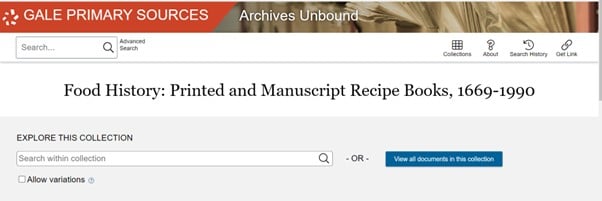
Cookbooks and recipes
Content of the earliest cookbooks focus on the preparation of meat, poultry, game, soup and fish. Moving through the decades this focus begins to change, with examples of vegetarian cooking. Over time, cooking with staples expanded to regional cuisine, such as the mid-west or southern United States, through to a Chinese cookbook from 1917, amongst European influences. From relying on the wisdom of Mrs Beeton, groups such as women’s auxiliaries started to create their own publications, and chefs to US Presidents shared kitchen secrets. For your next breakfast meal, eat like John F Kennedy; a large glass of orange juice, jam on toast, two four-and-a-half minute eggs, strips of broiled bacon, and a cup of coffee with cream and sugar. Another interesting feature of the collection is brand-created companion recipe books, which show how to replace or enhance ingredients with products, such as vegetable shortener or powdered milk, to (hopefully!) get the same end result.

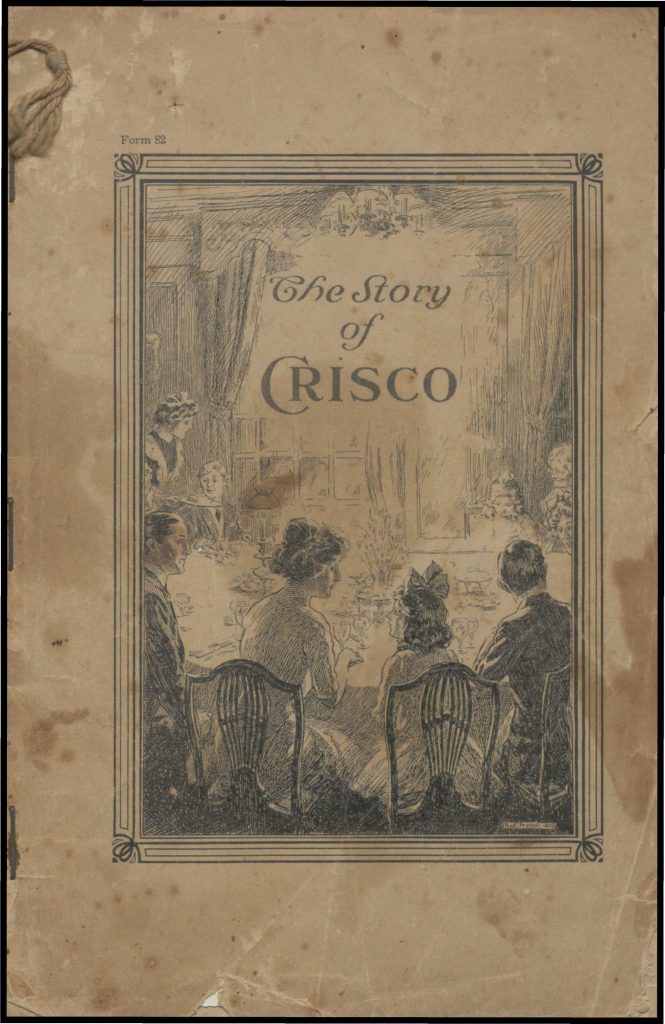
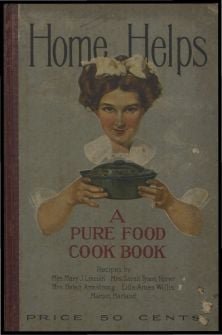
Covers of The Chinese Cook Book, The Story of Crisco, and Home Helps: a pure food cook book
Household hints and managing the household
For young women of earlier generations, marriage and running a household was the natural next stage of life and required an ‘education’, meaning that titles of books reflected social roles of the inexperienced housewife and young bride, who were required to care for their husband and children. Books were often written from the perspective of the more experienced housewife or confidant, imparting domestic advice to the beginner. There are multiple works by Isabella Beeton and Mrs ST Rorer. Guidance is provided on how to make preserves and pickle foods, churn butter and make cheese. Although lifestyles are different today, menu planning and serving suggestions had their beginnings in the late 19th and early 20th century. If you need to understand how to run a hot and cold wash cycle, or the best way to iron a shirt, turn to the 1875 edition of The Young Housewife’s Counsellor and Friend by Mrs Mary Mason. Another title advises that bad breath can be a sign of other health problems with the nostrils, teeth or stomach, so staying ‘neat’ and healthy is important. Removing freckles is as simple as adding a teaspoon of horseradish to a cup of sour milk; in addition, it bleaches the complexion. The housewife was also the first point of medical aid. One practical remedy for a nosebleed ‘that many will feel inclined to laugh at’ from ‘Dr Gleason’ is to vigorously move the jaw in a chewing motion. 1 Treatments for poisoning from yesteryear would not be recommended today. Drink warm water with a dessertspoon of mustard or use some melted lard or sweetened milk, instead. Slade’s Cooking School Recipes from 1916 advises to induce vomiting, followed by a combination of a teaspoon of Slade’s Mustard in warm water and the white of an egg, or ‘in the case of stupor, give strong coffee’, while waiting for the doctor. 2
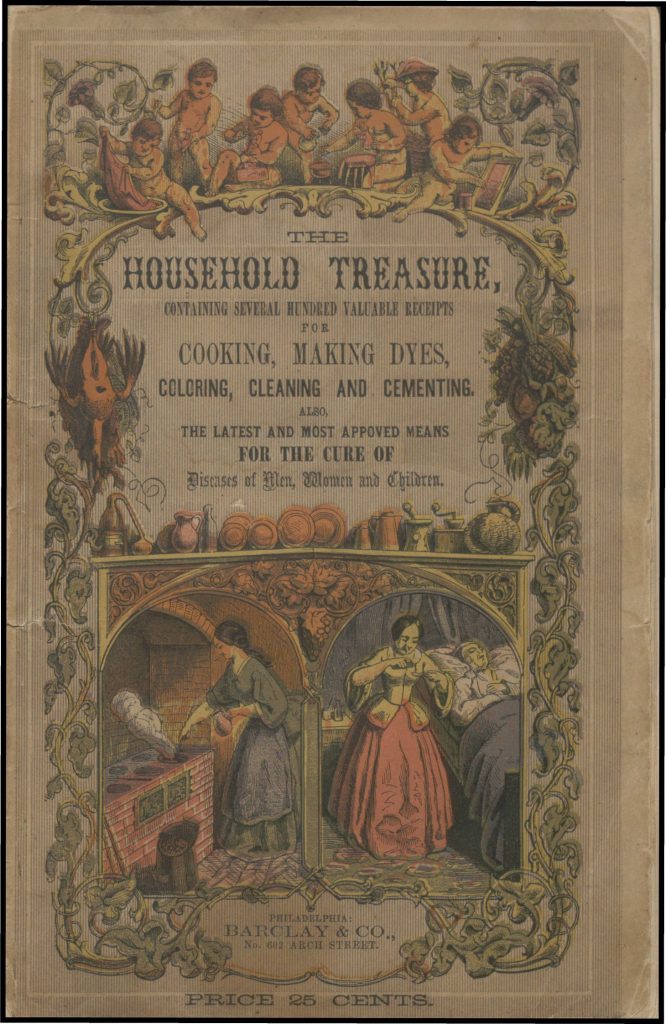

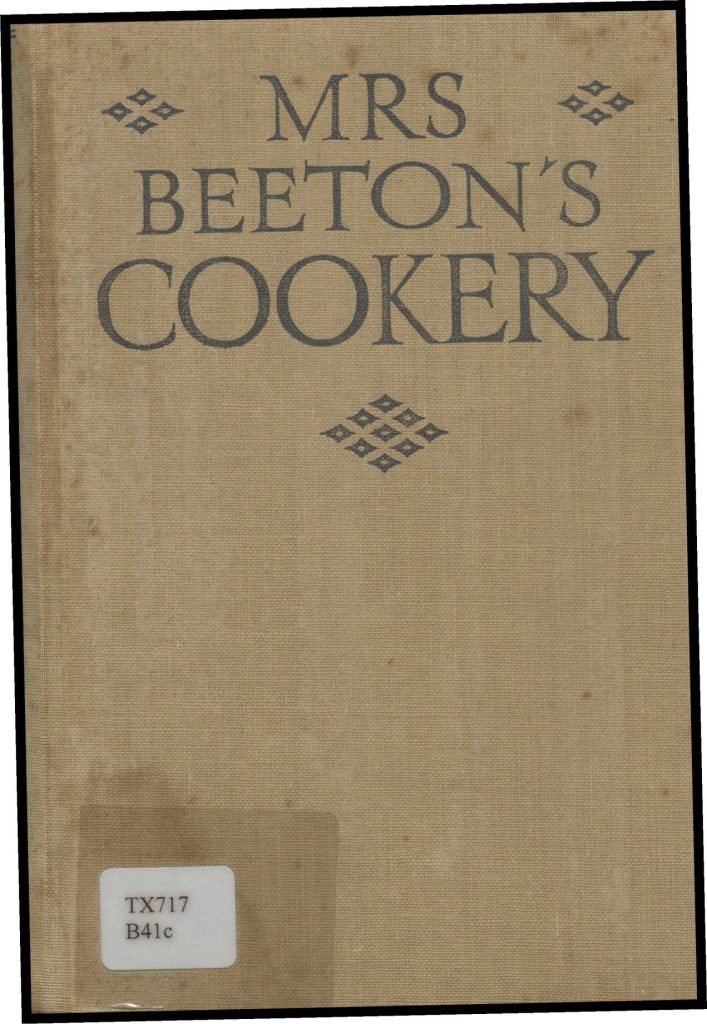
Covers of The Household Treasure, Mrs Mason, and Mrs Beeton’s Cookery
Etiquette and manners
While there may be less emphasis today on social norms at dinner parties, and the expectations of guests and hosts, the connection between food, hospitality and the home was once inseparable. The collection provides a fascinating insight into the rules to be observed, reminding us of some that are still relevant. For example, you should never leave the table until the meal is over, and not reading at the table in company could be replaced by not using the mobile phone today. In the wedding party of the 1800s, it was felt that bridesmaids should be younger than the bride and the bride’s dress should be plain with few embellishments. In 1904, it was not acceptable to bite into a whole peach at the table ‘as you would if you were out under the tree’; it should instead be ‘quartered, peeled and cut into mouthfuls’. 3 A well-dressed man gave an indication of his character; one who dresses ‘negligently’ is rarely held in high regard. 4 While a lot of jewellery on a young woman is out of place, and diamonds and pearls should only be worn with eveningwear. 5
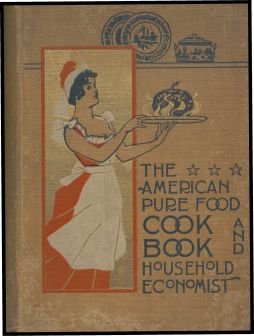
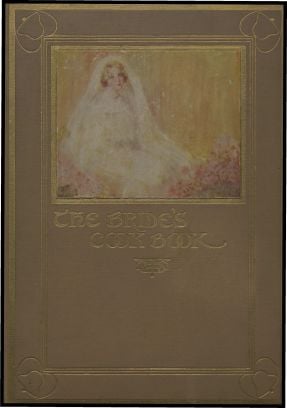
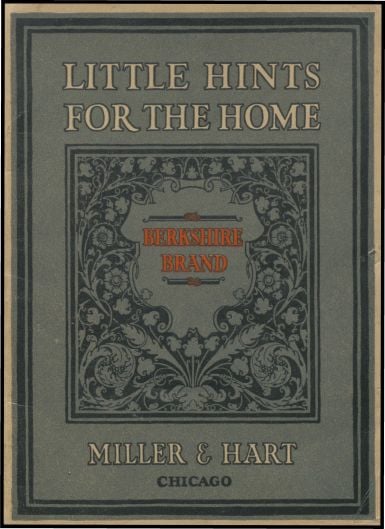
Covers of The American Pure Food Cook Book, The Bride’s Cook Book, and Little Hints for the Home
We hope you enjoy exploring Food history: Printed and manuscript recipe books. We always welcome your recommendations for database trials – let us know what you’d like to see. Have a research query or questions on how to use our online collections? Ask a Librarian.
References
- Practical Receipt Book: contains more than 400 valuable receipts for cooking and things worth knowing, [1860] J. Sargeant Hoopes, New Brighton, PA, p. 127.
- Slade’s Cooking School recipes: together with a collection of household and health hints, 1916, 7th edn, D & L Slade Co., Boston, p. 70.
- Terhune Herrick, C & Harland, M, 1904, Consolidated Library of Modern Cooking and Household Recipes, Volume 1, R. J. Bodmer, New York, p. 69.
- A Practical Reference Work for Housekeepers: the Household Companion, 1909, Uplift Publishing Co., Philadelphia, p. 166.
- as above.


Fabulous! had no idea that SLV held this database – I can’t wait to dive in!
I’m happy to hear this Katie. We have lots of hidden gems in our collection.